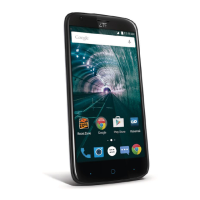8 Important Safety Information
Importan
t Safety Information
9
+
Only use the b
attery for the system
for which it is specified.
+ Only use the b
attery with a charging system
that has been qualified with the system per
CTIA Certification Requirements for Battery
System Compliance to IEEE 1725. Use of an
unqualified battery or charger may present a
risk of fire, explosion, leakage, or other hazard.
+
Do not short cir
cuit a battery or allow metallic
conductive objects to contact battery terminals.
+
Replace the b
attery only with another battery
that has been qualified with the system
per this standard, IEEE-Std-1725. Use of an
unqualified battery may present a risk of
fire, explosion, leakage or other hazard.
+ Promptly d
ispose of used batteries in
accordance with local regulations.
+ Batter
y usage by children
should be supervised.
+
Av
oid dropping the phone or battery. If the
phone or battery is dropped, especially on a
hard surface, and the user suspects damage,
take it to a service center for inspection.
+
Improper b
attery use may result in a
fire, explosion or other hazard.
+
The phone shal
l only be connected to CTIA
certified adapters, products that bear the
USB-IF logo or products that have completed
the USB-IF compliance program.
Ra
dio Frequency (RF) Energy
Unders
tanding How Your Phone Operates
Yo
ur phone is basically a radio transmitter and
receiver. When it’s turned on, it receives and
transmits radio frequency (RF) signals. When you
use your phone, the system handling your call
controls the power level. This power can range
from 0.006 watt to 0.2 watt in digital mode.

